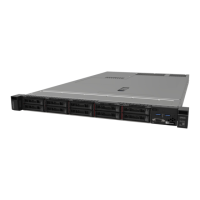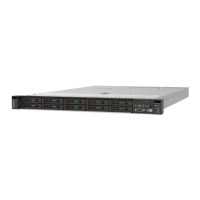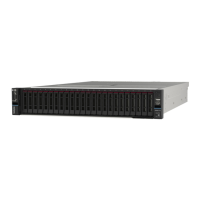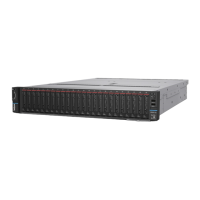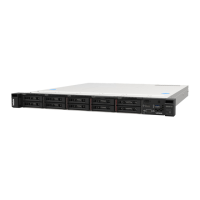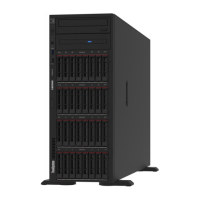Step 2. Check for short circuits, for example, if a loose screw is causing a short circuit on a circuit board.
Step 3. Remove the adapters and disconnect the cables and power cords to all internal and external
devices until the server is at the minimal configuration for debugging that is required for the server
to start. To determine the minimal configuration for your server, see “Minimal configuration for
debugging” in
“Technical specifications” on page 3.
Step 4. Reconnect all AC power cords and turn on the server. If the server starts successfully, reseat the
adapters and devices one at a time until the problem is isolated.
If the server does not start from the minimal configuration, replace the components in the minimal
configuration one at a time until the problem is isolated.
Resolving suspected Ethernet controller problems
The method that you use to test the Ethernet controller depends on which operating system you are using.
See the operating-system documentation for information about Ethernet controllers, and see the Ethernet
controller device-driver README file.
Complete the following steps to attempt to resolve suspected problems with the Ethernet controller.
Step 1. Make sure that the correct device drivers are installed and that they are at the latest level.
Step 2. Make sure that the Ethernet cable is installed correctly.
• The cable must be securely attached at all connections. If the cable is attached but the problem
remains, try a different cable.
• Make sure that the cable used is supported by the adapter. For more information about the
supported adapters, cables, and transceivers of the specific servers, go to .
• Make sure that the cable rating is sufficient for the data rate of the network. For example, a 1 Gb
RJ45 network requires a cable of Cat5e or higher rating.
Step 3. Determine whether the switch supports auto-negotiation. If not, try configuring the integrated
Ethernet controller manually to match the speed of the switch port. Also, if forward error correction
(FEC) modes are supported, make sure that both the adapter and the switch port have matching
settings.
Step 4. Check the Ethernet controller LEDs on the server. These LEDs indicate whether there is a problem
with the connector, cable, or switch.
If the Ethernet function is implemented on the system board assembly, the Ethernet controller LED
locations are specified in
“Troubleshooting by system LEDs and diagnostics display” on page 292.
• The Ethernet link status LED is lit when the Ethernet controller has established link with the
switch port. If the LED is off, there might be a defective connector or cable or a problem with the
switch port. In some cases, a bi-color link LED is used. Green indicates a link at the highest
network speed. Yellow indicates a link lower than the highest network speed.
• The Ethernet transmit/receive activity LED is lit or blinks when the Ethernet controller sends or
receives data over the Ethernet network. If the Ethernet transmit/receive activity is off, make sure
that the switch is powered on, the network is operating, and the correct device drivers are
installed.
Step 5. Check for operating-system-specific causes of the problem, and make sure that the operating
system drivers are installed correctly.
Step 6. Make sure that the device drivers on the client and server are using the same protocol.
If the Ethernet controller still cannot connect to the network but the hardware appears to be working, the
network administrator must investigate other possible causes of the error.
Chapter 8. Problem determination 315

